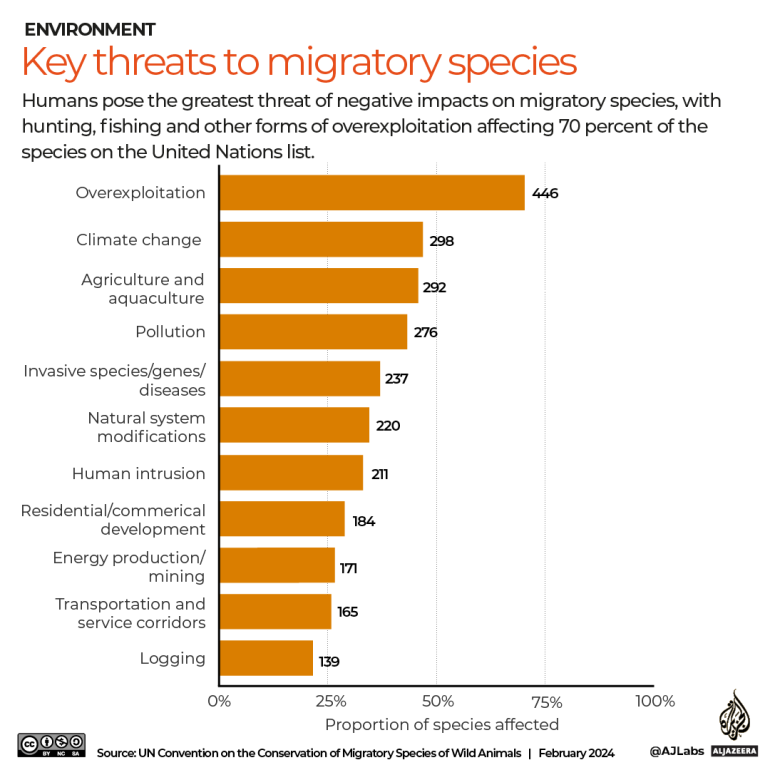
About 44% of migratory species across the world are in decline while 20% the threat of all-out extinction, according to a new report from the United Nations.
About 14% of migratory birds are threatened.
97% of the 58 fish species it monitors are threatened with extinction.
The report also notes a 95% drop in the numbers of European eel since the 1980s, which it says has been due to a range of factors, including barriers to migration and overfishing during the early stages of their life.
The decline of migratory species cannot be pinned down to one single factor but stems from a combination, including loss of natural habitat and overexploitation.
Habitat loss happens when land becomes urbanised, transformed for human use or degraded through pollution. It can also happen when habitable land is broken down into smaller, isolated patches. Farming is a primary driver of this sort of fragmentation.
Agricultural and industrial activity also release dangerous chemicals into habitats. Persistent organic pollutants have been found in migratory species such as the common tern in the Great Lakes region of the US despite increased regulation.
According to the UN report, 58% of monitored lands are under unsustainable pressure.
Overhunting and -fishing was found to be the leading cause of declines in migratory species studied by the UN. This involves illegal hunting or fishing, overfishing and the incidental capture of non-target species.
Every year, 11 million to 36 million birds are estimated to be illegally killed or removed from the Mediterranean region alone.
In the East Asian-Australasian flyway of migratory birds, illegal trapping has caused the yellow-breasted bunting to go from “superabundant” to “critically endangered” through a population decline of 84 to 95%.
In the case of fish, a 2018 study by the UN Food and Agricultural Organization found the Mediterranean Sea was the most overfished in the world with 62% of its fish stocks overfished and at severe risk of depletion.
Climate change is the second most significant factor contributing to the decline of migratory species, the UN report says. The changes in temperature, precipitation and weather patterns that it brings can affect the suitability of breeding and stopover sites along migration routes.
Environmental changes and habitat loss in the Yellow Sea between China and Korea in the Western Pacific have particularly affected water birds, such as shorebirds or waders, which would normally stop there to rest and refuel during their migrations.